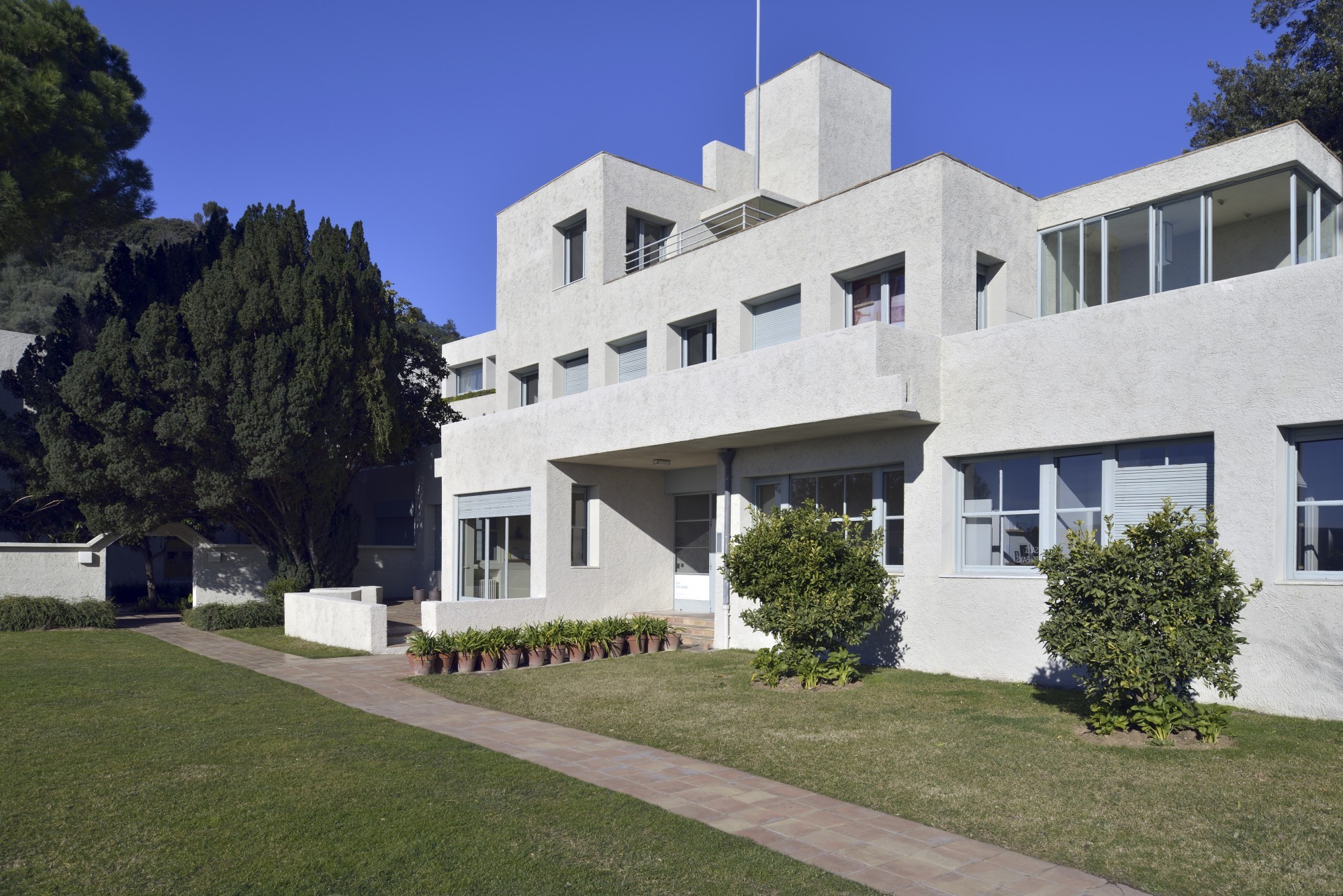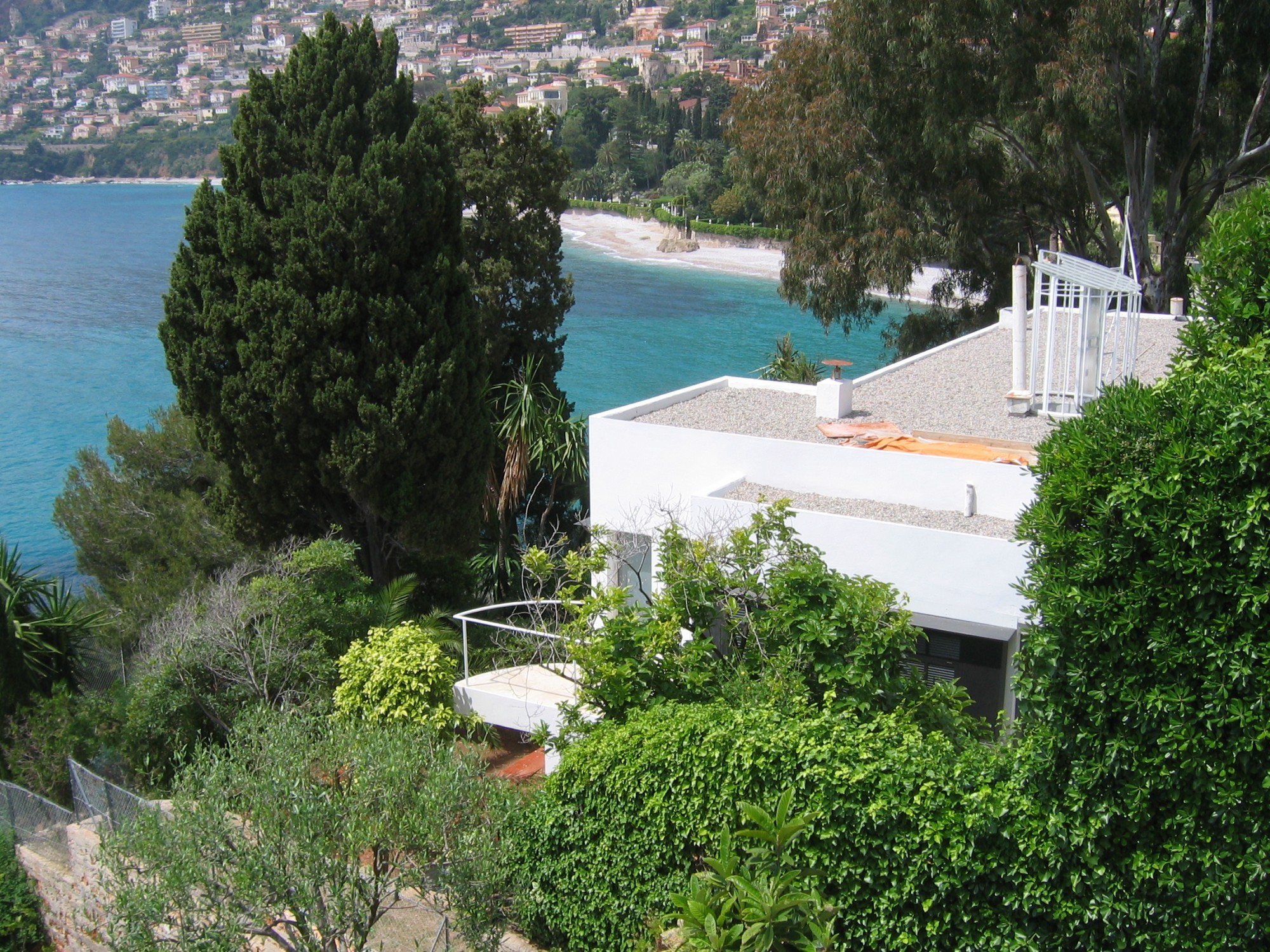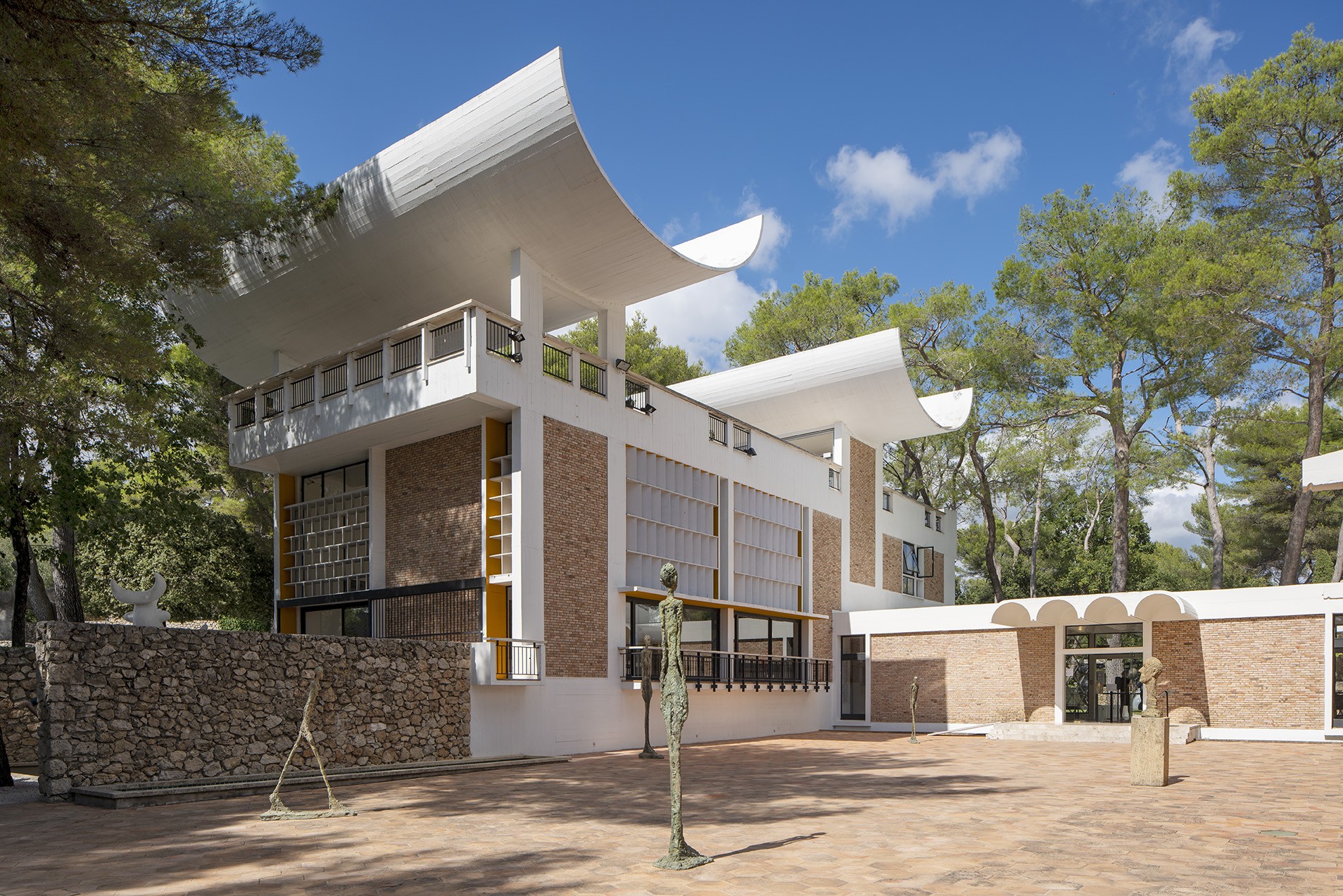La Villa Noailles
1923, at the heart of the Roaring Twenties. Close to the avant-gardes (including Jean Cocteau) and keen on radical aesthetics, the Viscount de Noailles and his wife Marie-Laure finally decided. They commissioned architect Robert Mallet-Stevens for a summer villa of a very new kind. Functionality, light, and refinement: the structure was born two years later and against the grain of the Art Deco style of that time, it gives pride to terraces and gardens; including the famous cubist garden by Gabriel Guévrékian. The place houses with greatness convertible and/or integrated into the architecture furniture: the creations by Eileen Gray, Charlotte Perriand, Marcel Breuer… Located on the hill overlooking the city of Hyères, this comfortable villa then became a genuine setting for avant-gardes thanks to the couple’s generosity and open-mindedness. Dalí, Giacometti, Picasso, Man Ray, Cocteau stayed there. Buñuel even shot his first surrealist movie there in 1929, The Mysteries of the Château de Dé.

La Villa E-1027 d'Eileen Gray
In the early 1920s in Paris, they fell in love and decided to celebrate their romance with the creation of a villa. The woman, Eileen Gray, was then famous for her metal tube furniture and Jean Badovici for having created the magazine L'Architecture Vivante. He was the one convincing his designer partner to do architecture. In 1926, ground was broken in Roquebrune-Cap-Martin. Built on stilts and offering a breathtaking view over the Mediterranean, the villa looks like a boat run aground. Eileen Gray gave a more sensual style to the modernist forms she regarded as rather cold. She also concieved the interior furnishings and imbued the walls with her humour by writing catchphrases like “Come in slowly” or “Laughing is forbidden”. In 1996, the place was sadly abandonned, flooded with rain, squatted, the furniture scattered… Fortunately, a restoration campaign was launched starting from 1999. Architects Claudia Devaux, Burkhardt Rukschcio and Renaud Barrès investigated and succeeded to restore the villa basing on accounts and archives.

La Fondation Maeght
Before it became one of the most important modern art foundations, the Maeght’s property in Saint-Paul-de-Vence was already hosting many artists. In Saint-Paul-de-Vence, at the Provencal farmhouse in Saint Bernard, Braque, Miro or Prévert visited their friends “Aimé and Guiguite”, famous art dealers exhibiting Chagall, Calder, Giacometti, among others. The place as we know it today – with its renowned pagoda roofs – emerged in 1964, on an idea by George Braque and André Malraux, when the Maeght had just lost their son… The grieving couple entrusted the building of their new foundation to the leading figure of Spanish modernism Josep Lluís Sert. This one conceived a mini city consisting of five villas, studios, a church… Many artists therefore stayed in this idyllic setting with its surrounding woods, its patio, its pool decorated by Braque, its Giacometti Courtyard, its Miró Labyrinth…
Here, art, nature, and architecture fuse.
